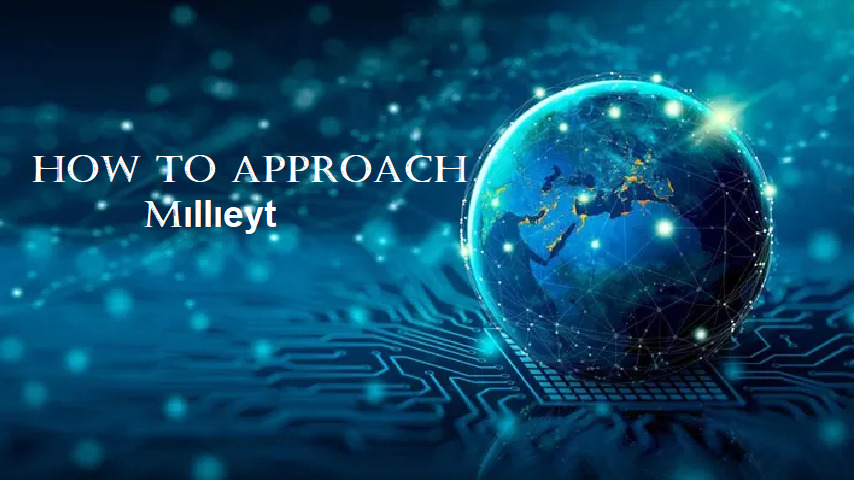
Introduction
Definition of Mıllıeyt
Nationalism, or Mıllıeyt in its native context, represents a complex and multifaceted ideology that has played a significant role in shaping societies, politics, and international relations. At its core, Mıllıeyt embodies a sense of collective identity, belonging, and loyalty to one’s nation-state or ethnic group. However, its manifestations and interpretations vary widely across different historical, cultural, and geopolitical contexts.
Importance of Understanding Nationalism
Understanding nationalism, including its historical origins, ideological underpinnings, and contemporary expressions, is crucial for comprehending numerous aspects of human behavior and societal dynamics. Nationalism has been a driving force behind revolutions, wars, and state formations, as well as a catalyst for cultural movements, identity politics, and social cohesion. Moreover, in an increasingly interconnected world, nationalism continues to shape geopolitical landscapes, fueling debates over sovereignty, immigration, and global governance.
Historical Context
Early Notions of Identity and Belonging
The concept of identity and belonging has deep roots in human history, with early civilizations often organizing themselves around kinship ties, shared culture, and geographic proximity. Ancient empires, such as the Roman and Persian, fostered a sense of unity among diverse populations through language, law, and religion. Additionally, tribal societies and city-states developed distinct identities based on common ancestry, traditions, and territorial boundaries.
Emergence of Modern Nationalism
Modern nationalism began to take shape during the Enlightenment era in Europe, as intellectuals and philosophers championed the ideals of individual rights, democracy, and self-determination. The French Revolution of 1789, with its emphasis on liberty, equality, and fraternity, served as a catalyst for nationalist sentiments, inspiring movements across the continent. Romanticism further fueled nationalist fervor by romanticizing the unique characteristics and heritage of various ethnic groups.
Key Events and Movements
Several key events and movements in the 19th and early 20th centuries contributed to the rise of nationalism as a potent political force. The unification of Italy under Garibaldi and Cavour, and the formation of the German Empire under Bismarck, symbolized the triumph of nationalist aspirations over imperial fragmentation. Meanwhile, anti-colonial movements in Asia, Africa, and the Americas sought to assert national independence and cultural identity against colonial powers. These movements reshaped the geopolitical landscape and set the stage for the emergence of nation-states as the dominant political units.

Ideological Foundations
Enlightenment Philosophers and National Identity
The Enlightenment period, spanning from the late 17th to the late 18th century, marked a significant shift in European thought towards rationalism, individualism, and human rights. Enlightenment philosophers such as Jean-Jacques Rousseau, John Locke, and Immanuel Kant contributed to the development of nationalist ideas by emphasizing the importance of popular sovereignty and the social contract. Rousseau’s concept of the “general will” and the idea of a community bound by shared values and interests laid the groundwork for modern notions of national identity.
Romanticism and Cultural Nationalism
The Romantic movement, which emerged in the late 18th and early 19th centuries, celebrated the uniqueness of individual cultures and their contributions to collective identity. Romantic thinkers like Johann Gottfried Herder and Johann Wolfgang von Goethe promoted the idea of cultural nationalism, asserting that each ethnic group possessed a distinct spirit or Volksgeist that manifested through its language, folklore, and traditions. This emphasis on cultural heritage and authenticity fueled nationalist aspirations by encouraging people to cherish and preserve their cultural heritage.
Political Theories and Nationalist Ideologies
Political theorists and ideologues in the 19th and 20th centuries developed various nationalist ideologies that sought to mobilize populations around shared symbols, myths, and aspirations. From conservative nationalists like Edmund Burke, who prioritized tradition, hierarchy, and national greatness, to liberal nationalists like Giuseppe Mazzini, who championed democracy, equality, and self-determination, nationalist ideologies encompassed a wide range of political and philosophical perspectives. Marxist and socialist thinkers also contributed to nationalist discourse by emphasizing the role of class struggle and economic development in shaping national identity and solidarity.
Socio-Economic Factors of Mıllıeyt
Industrialization and Urbanization
The advent of industrialization and urbanization in the 19th century had profound effects on the development of nationalism. Industrialization brought about significant social and economic changes, including the concentration of population in urban centers, the growth of industrial capitalism, and the emergence of new social classes. Urbanization facilitated the mixing of diverse populations and fostered a sense of shared experience among urban dwellers, while industrialization created new economic opportunities and inequalities that influenced nationalist sentiments.
Economic Disparities and Class Consciousness
Economic disparities and class consciousness played a crucial role in shaping nationalist movements and ideologies. The rise of industrial capitalism led to the emergence of distinct social classes, including industrial capitalists, workers, and the urban middle class. Economic inequalities and exploitation fueled class-based grievances and solidarity, leading to the development of socialist and Marxist interpretations of nationalism that emphasized the importance of class struggle and economic justice. Moreover, nationalist movements often sought to address socio-economic grievances and aspirations by advocating for policies that promoted economic development, social welfare, and national self-sufficiency.
Ethnic and Linguistic Diversity
Ethnic and linguistic diversity has been both a source of strength and division within nationalist movements. In multi-ethnic or multi-linguistic societies, nationalist sentiments often revolve around the assertion of ethnic or linguistic identity and the preservation of cultural heritage. However, ethnic diversity can also lead to conflicts over territory, resources, and political power, as different groups vie for recognition and autonomy. Nationalist movements may either seek to accommodate ethnic diversity through federalism, devolution, or multiculturalism, or emphasize a dominant ethnic or linguistic identity that marginalizes minority groups.

Cultural Influences of Mıllıeyt
Language, Literature, and Folklore
Language, literature, and folklore play a central role in fostering a sense of national identity and unity. Language serves as a primary marker of cultural identity, with nationalist movements often advocating for the preservation and promotion of a national language as a means of asserting sovereignty and cultural distinctiveness. Literature, including poetry, novels, and historical narratives, often serves as a repository of national myths, symbols, and values, shaping collective memory and identity. Folklore, including myths, legends, and traditional customs, reinforces cultural identity and connects individuals to a shared heritage, providing a sense of continuity and belonging across generations.
Art, Music, and Symbolism
Art, music, and symbolism have long been used as powerful tools for expressing nationalist sentiments and ideals. Nationalist movements often employ visual symbols, such as flags, anthems, and emblems, to evoke feelings of patriotism and solidarity among supporters. Artistic expressions, including paintings, sculptures, and architecture, may depict national heroes, historical events, or landscapes, celebrating the nation’s cultural achievements and aspirations. Music, through national anthems, folk songs, and patriotic hymns, can evoke strong emotions and foster a sense of collective identity, particularly during times of political upheaval or national struggle.
Education and Propaganda
Education and propaganda play a crucial role in shaping nationalist attitudes and beliefs, particularly among youth and the general population. Nationalist governments often control education systems to promote a standardized version of national history, culture, and identity, emphasizing the achievements and virtues of the nation while downplaying or vilifying perceived enemies or adversaries. Propaganda, including posters, films, and media campaigns, may manipulate symbols, narratives, and emotions to mobilize support for nationalist causes and legitimize authoritarian regimes. However, education and propaganda can also be used as tools for resistance and liberation, empowering marginalized groups to assert their rights and challenge dominant nationalist narratives.
Political Dynamics
State Building and Nationhood
State building and the formation of nation-states have been closely intertwined with the rise of nationalism. Nationalist movements often seek to establish or consolidate political institutions that reflect the aspirations and identity of the nation. State building involves the creation of centralized governance structures, legal systems, and administrative bureaucracies that assert sovereignty and enforce national unity. Nationhood, on the other hand, refers to the collective consciousness and shared identity of a people who identify with a common history, culture, and territory. The process of nation-building often involves defining the boundaries of the nation-state, codifying national symbols and rituals, and fostering a sense of civic loyalty and allegiance among citizens.
Nationalist Movements and Revolutions
Nationalist movements and revolutions have played a pivotal role in challenging existing political orders and advocating for self-determination and sovereignty. Nationalist movements may take various forms, ranging from peaceful activism and cultural revivalism to armed insurrection and guerrilla warfare. Revolutionary nationalists seek to overthrow colonial or oppressive regimes, establish independent nation-states, or redraw territorial boundaries to reflect ethnic or linguistic identities. Key examples of nationalist revolutions include the American Revolution, the Haitian Revolution, and the Indian Independence Movement, which led to the establishment of sovereign nation-states and the overthrow of colonial rule.
Colonialism and Anti-Colonial Struggles
Colonialism and imperialism have often been catalysts for nationalist resistance and anti-colonial struggles. Colonial powers imposed foreign rule, exploited indigenous resources, and suppressed local cultures and identities, fueling resentment and resistance among colonized peoples. Anti-colonial nationalists sought to reclaim political sovereignty, cultural autonomy, and economic independence through various means, including diplomatic negotiations, armed resistance, and mass mobilization. The struggle against colonialism often involved alliances between nationalist movements, social justice movements, and international solidarity networks, leading to the dismantling of colonial empires and the emergence of new post-colonial nation-states.
Psychological Perspectives
Collective Identity and Group Dynamics
Nationalism often emerges from a collective sense of identity and belonging, rooted in shared experiences, values, and symbols. Group dynamics play a crucial role in shaping nationalist sentiments, as individuals seek affiliation with a larger social group and derive meaning and validation from their membership in the nation. Social identity theory suggests that individuals develop a sense of “us” versus “them” based on perceived similarities and differences with other groups, leading to ingroup favoritism and outgroup hostility. Nationalist movements may exploit these dynamics to foster solidarity, cohesion, and loyalty among supporters, while demonizing outsiders or perceived threats to national unity.
Fear, Insecurity, and the Other
Nationalism is often fueled by feelings of fear, insecurity, and threat perception, as individuals and groups seek to protect their identity, territory, and interests from perceived external or internal enemies. Social psychology theories, such as realistic group conflict theory and intergroup threat theory, suggest that competition over resources, status, or cultural dominance can exacerbate intergroup tensions and fuel nationalist attitudes. Nationalist ideologies may scapegoat marginalized groups, immigrants, or ethnic minorities as the “other,” blaming them for social, economic, or political problems and portraying them as threats to national security or cultural purity. Fear-based nationalism can lead to xenophobia, discrimination, and even violence against perceived outsiders or enemies.
Nationalism and Human Psychology
Nationalism reflects fundamental aspects of human psychology, including the need for identity, belonging, and meaning. Evolutionary psychologists argue that group cohesion and cooperation provided survival advantages for early human societies, leading to the evolution of psychological mechanisms that promote ingroup loyalty and cooperation. Nationalist ideologies tap into these psychological predispositions by framing the nation as an extended family or kin group, fostering feelings of loyalty, pride, and solidarity among citizens. However, nationalism can also exacerbate tribalism, ethnocentrism, and authoritarianism, as individuals prioritize the interests of their own group over those of others, leading to conflict, prejudice, and oppression.

Contemporary Manifestations
Nationalism in Global Politics
Nationalism continues to exert a significant influence on global politics, shaping diplomatic relations, international conflicts, and geopolitical alliances. In recent years, nationalist leaders and movements have gained prominence in various countries, advocating for protectionist policies, immigration restrictions, and unilateralism. Nationalist governments often prioritize national sovereignty and prioritize the interests of their own nation above international cooperation or global governance. The resurgence of nationalism in global politics has led to tensions between nationalist and cosmopolitan visions of world order, fueling debates over sovereignty, multilateralism, and the role of supranational institutions.
Ethno-Nationalism and Secessionist Movements
Ethno-nationalism, which emphasizes the primacy of ethnic or linguistic identity, continues to fuel secessionist movements and ethnic conflicts in many parts of the world. Ethno-nationalist movements seek to establish independent nation-states based on ethnic or cultural homogeneity, often at the expense of minority rights or territorial integrity. Secessionist movements may arise in response to perceived discrimination, marginalization, or political repression by central governments, leading to demands for autonomy, self-determination, or secession. Ethno-nationalist conflicts pose significant challenges to peace, stability, and democratization, as they often involve competing claims to territory, resources, and historical narratives.
Impact of Technology and Social Media
Technology and social media have transformed the landscape of nationalist discourse and mobilization, enabling the rapid spread of nationalist ideologies, narratives, and propaganda. Social media platforms provide a powerful tool for nationalist movements to organize, recruit supporters, and disseminate their message to a global audience. Online communities and echo chambers amplify nationalist sentiments, reinforcing group identity and polarization while marginalizing dissenting voices. Technology also facilitates surveillance, censorship, and state control, enabling nationalist governments to suppress dissent and manipulate public opinion. However, technology can also empower marginalized groups to resist nationalist narratives and mobilize for social justice, human rights, and democracy.
Critiques and Challenges
Nationalism and Ethical Concerns
Nationalism raises ethical concerns related to its potential to foster exclusionary attitudes, prejudice, and discrimination against perceived outsiders or minorities. Critics argue that nationalist ideologies often promote a narrow and homogenized conception of identity, excluding individuals who do not fit within the dominant cultural, ethnic, or ideological framework. Nationalist movements may prioritize the interests of the nation-state over universal human rights, leading to violations of individual freedoms, minority rights, and democratic principles. Furthermore, nationalism can fuel aggressive or expansionist foreign policies, leading to conflicts, imperialism, and human rights abuses.
Nationalism versus Globalization
Nationalism poses challenges to the process of globalization, which involves increasing interconnectedness, interdependence, and integration among nations and societies. While globalization has led to economic prosperity, cultural exchange, and technological innovation, it has also generated fears of cultural homogenization, loss of sovereignty, and economic inequality. Nationalist movements often resist globalization by advocating for protectionist trade policies, immigration restrictions, and cultural preservation measures. However, critics argue that nationalist responses to globalization may exacerbate social divisions, hinder international cooperation, and impede efforts to address global challenges such as climate change, pandemics, and terrorism.
Addressing Extremism and Xenophobia
Nationalism can contribute to extremism, xenophobia, and ethnocentrism, particularly when manipulated by political leaders or exploited by extremist groups. Extreme forms of nationalism may promote supremacist ideologies, ethnic cleansing, and genocide, leading to violence, persecution, and human suffering. Xenophobia, or fear and hostility towards foreigners or immigrants, can fuel discrimination, hate crimes, and social exclusion, undermining social cohesion and multiculturalism. Addressing extremism and xenophobia requires promoting inclusive and pluralistic values, strengthening democratic institutions, and fostering dialogue and empathy across diverse communities.
Conclusion
Summarizing Key Findings
Throughout this exploration of Mıllıeyt and its various facets, several key findings have emerged. We’ve traced the historical, ideological, socio-economic, cultural, political, and psychological dimensions of nationalism, shedding light on its complex and multifaceted nature. From its roots in early notions of identity and belonging to its contemporary manifestations in global politics and social media, nationalism continues to shape human behavior, societal dynamics, and international relations. We’ve examined the role of nationalism in state-building, ethno-nationalist conflicts, and resistance movements, as well as its implications for globalization, human rights, and democracy. Moreover, we’ve considered the ethical concerns, challenges, and critiques associated with nationalism, including its potential to foster exclusion, conflict, and extremism.
Implications for Understanding and Managing Nationalism
The exploration of Mıllıeyt has significant implications for understanding and managing nationalism in the contemporary world. Recognizing the diverse roots, motivations, and manifestations of nationalism is essential for policymakers, scholars, and citizens alike. Understanding the interplay between nationalism and other socio-political forces, such as globalization, migration, and technological change, can inform more nuanced and effective strategies for addressing nationalist movements and conflicts. Moreover, fostering dialogue, empathy, and inclusivity across diverse communities is crucial for mitigating the negative effects of nationalism and promoting peaceful coexistence and mutual respect.
Future Directions for Research and Dialogue
Looking ahead, there is a need for further research and dialogue on nationalism to deepen our understanding of its causes, consequences, and potential remedies. Future research could explore the intersectionality of nationalism with other forms of identity, such as gender, religion, and ethnicity, as well as its impact on marginalized and vulnerable populations. Moreover, interdisciplinary approaches that integrate insights from history, political science, sociology, psychology, and cultural studies can provide a more holistic understanding of nationalism and its dynamics. Engaging in constructive dialogue and collaboration across national, cultural, and disciplinary boundaries is essential for promoting tolerance, diversity, and peace in an increasingly interconnected and diverse world.
FAQs
- Does Millieyt accept commissions?
- Yes, Millieyt occasionally accepts commissions for custom artwork.
- Has Millieyt received any awards or recognition for their art?
- Millieyt has garnered recognition from art communities and has been featured in various online showcases.
- Does Millieyt share their artistic process with their audience?
- Yes, Millieyt sometimes shares insights into their creative process through social media posts and tutorials.
- How does Millieyt engage with their audience?
- Millieyt interacts with their audience through social media, responding to comments and sharing updates on their work.
- What distinguishes Millieyt’s art from others in the digital art community?
- Millieyt’s art stands out for its unique blend of surrealism, vibrant colors, and attention to detail.
- Has Millieyt explored other artistic mediums besides digital art?
- While primarily focused on digital art, Millieyt may occasionally experiment with traditional mediums like painting or sculpture.
- What impact has Millieyt had on the digital art community?
- Millieyt has inspired aspiring artists and contributed to the digital art community through their innovative and imaginative creations.
- Does Millieyt engage in any charitable or community-oriented activities related to art?
- Millieyt may occasionally participate in charity art auctions or events to support causes they believe in.
- How does Millieyt stay motivated and inspired in their artistic journey?
- Millieyt finds motivation and inspiration through exploring new ideas, learning from other artists, and connecting with their audience.
- What are Millieyt’s future aspirations in their artistic career?
- Millieyt aims to continue evolving as an artist, exploring new techniques, and reaching a broader audience with their art.



